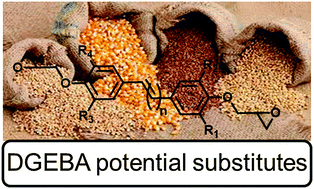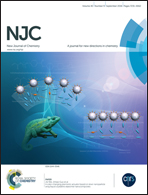Synthesis of bio-based epoxy monomers from natural allyl- and vinyl phenols and the estimation of their affinity to the estrogen receptor α by molecular docking†
Abstract
Diepoxydized diphenyls from eugenol, 4-vinyl guaiacol and 4-vinyl syringol (canolol) were synthesized as sustainable alternatives to the diglycidyl ether of bisphenol A (DGEBA). In the first step, glycidylated derivatives were produced by reaction with epichlorohydrin. Then, the dimerization of these derivatives was performed by cross metathesis (CM) reaction in the presence of the Grubbs II catalyst. From the CM reaction, a set of epoxy phenolic dimers was obtained in good yields with a high diastereoselectivity. Estimation by molecular docking calculations of the affinity of the synthesized products and their hydrolysed structures to the intranuclear estrogen receptor ERα showed that the epoxy forms presented a moderate affinity to the antagonistic conformation of the receptor (six to forty times lower than bisphenol A and in the same order of magnitude as DGEBA) and mostly no binding in the agonist conformation. The hydrolysed forms of the epoxy products, which are expected to be predominant in the human body cells, exhibited a relatively weak affinity to the ERα LBD in its both agonistic and antagonistic conformations.


 Please wait while we load your content...
Please wait while we load your content...